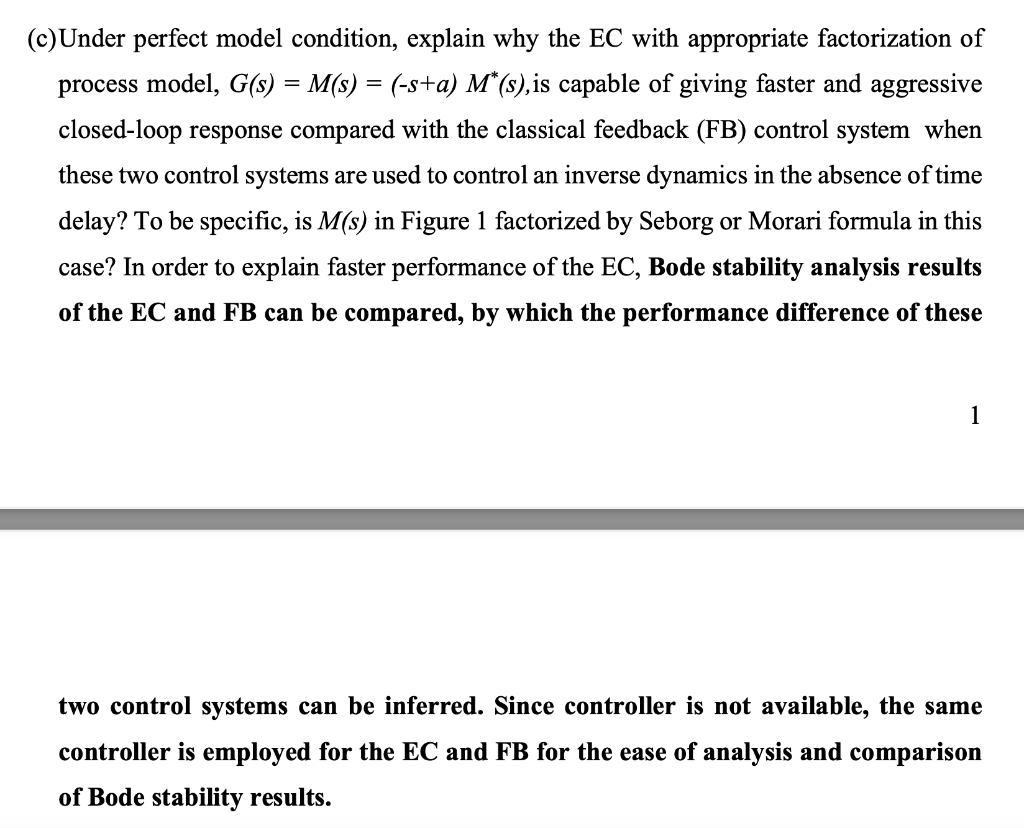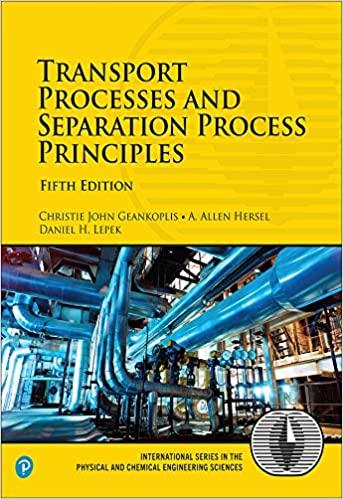Answered step by step
Verified Expert Solution
Question
1 Approved Answer
Also explain whether seborg or morari is used and why. Please provide quantitative answers and justifications and not just qualitative explanations thank you. Unknown values



Also explain whether seborg or morari is used and why. Please provide quantitative answers and justifications and not just qualitative explanations thank you. Unknown values not given can be assumed/estimated, just state them.
Note * In Simulink, PID controller with the following equation, P+I/s+Ds, is used. As a result, the following relations hold, P=Kc,I=Kc/I and D=KcD, where Kc,I, and D are the PID parameters defined in the textbook and lecture notes. The enhanced control (EC) system depicted in Figure 1 consists of the process G(s), PID/PI controller C(s) and process modelM(s). The modelM(s) is factorized as follows M(s)=M1(s)M2(s) (c)Under perfect model condition, explain why the EC with appropriate factorization of process model, G(s)=M(s)=(s+a)M(s), is capable of giving faster and aggressive closed-loop response compared with the classical feedback (FB) control system when these two control systems are used to control an inverse dynamics in the absence of time delay? To be specific, is M(s) in Figure 1 factorized by Seborg or Morari formula in this case? In order to explain faster performance of the EC, Bode stability analysis results of the EC and FB can be compared, by which the performance difference of these 1 two control systems can be inferred. Since controller is not available, the same controller is employed for the EC and FB for the ease of analysis and comparison of Bode stability resultsStep by Step Solution
There are 3 Steps involved in it
Step: 1

Get Instant Access to Expert-Tailored Solutions
See step-by-step solutions with expert insights and AI powered tools for academic success
Step: 2

Step: 3

Ace Your Homework with AI
Get the answers you need in no time with our AI-driven, step-by-step assistance
Get Started


